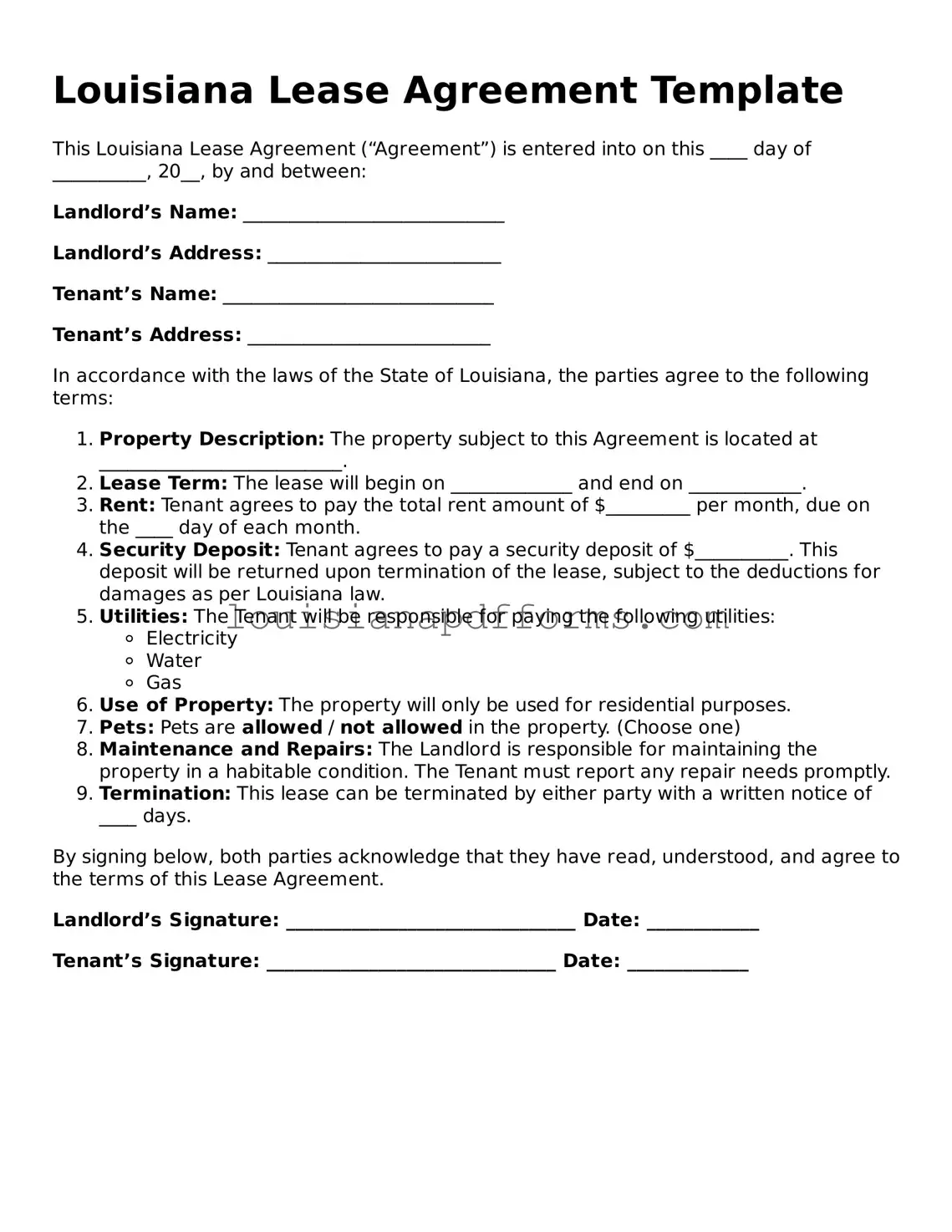Louisiana Lease Agreement Template
This Louisiana Lease Agreement (“Agreement”) is entered into on this ____ day of __________, 20__, by and between:
Landlord’s Name: ____________________________
Landlord’s Address: _________________________
Tenant’s Name: _____________________________
Tenant’s Address: __________________________
In accordance with the laws of the State of Louisiana, the parties agree to the following terms:
- Property Description: The property subject to this Agreement is located at __________________________.
- Lease Term: The lease will begin on _____________ and end on ____________.
- Rent: Tenant agrees to pay the total rent amount of $_________ per month, due on the ____ day of each month.
- Security Deposit: Tenant agrees to pay a security deposit of $__________. This deposit will be returned upon termination of the lease, subject to the deductions for damages as per Louisiana law.
- Utilities: The Tenant will be responsible for paying the following utilities:
- Use of Property: The property will only be used for residential purposes.
- Pets: Pets are allowed / not allowed in the property. (Choose one)
- Maintenance and Repairs: The Landlord is responsible for maintaining the property in a habitable condition. The Tenant must report any repair needs promptly.
- Termination: This lease can be terminated by either party with a written notice of ____ days.
By signing below, both parties acknowledge that they have read, understood, and agree to the terms of this Lease Agreement.
Landlord’s Signature: _______________________________ Date: ____________
Tenant’s Signature: _______________________________ Date: _____________
